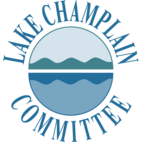Water Pollution - A Systemic Problem
April 2013

The EPA recently released a report identifying 55% of the nation’s waters as in poor condition for aquatic life. With such a broad swath of the country’s waters ailing it is clear that the drivers of water pollution are systemic throughout the country.
The primary cause of impairment, not surprisingly, is pollution from excess nutrients, phosphorus and nitrogen. Excess nutrients cause algae blooms and decrease the amount of oxygen available for fish. Phosphorus caused impairment in 40% of streams, nitrogen in 27%. Some waterbodies have more than one cause of their poor condition. The excess nutrients mostly come from fertilizer used on lawns and agricultural crops.
The ability to move massive quantities of plant nutrients around the world is a relatively recent phenomenon in human history. In the thirty-five years after 1950 the use of mineral phosphorus fertilizer increased five-fold, going from about four metric tons per year to 21 metric tons per year. The trend has leveled since then. The increase came about because of technological advances that allowed the nutrient to be extracted from phosphorus-rich rocks. The largest producers of phosphate rock in declining order of 2010 mine production are China, the United States, Morocco, Russia, Tunisia, Jordan, Brazil and Egypt. Neither China nor the US export this material, maintaining it all for domestic use.
At first, the ready availability of phosphorus for fertilizer was a tremendous boon. Agricultural yields increased as governments eagerly encouraged application of fertilizers. As a result, from 1940 through 1962 10,000 tons or more of superphosphate was imported to Vermont each year for farmers to apply to fields. However, research in the 1970s began to show phosphorus as the key element causing algae blooms in freshwater lakes.
Over time, more fertilizer has been added to fields than is removed by plant uptake. The excess phosphorus stays in soils until they erode. Erosion becomes particularly problematic when housing developments are built on former agricultural fields as exposure of soil during the construction process and the increase of impermeable surfaces from the houses, roads, and driveways increase soil erosion. Yet today we continue to import more phosphorus into our watersheds than is exported in plant material. As an aside, the root mechanism leading to environmental problems is not unlike what happens when we remove carbon from the earth and inject it into the atmosphere impacting the climate.
Models constructed by Stephen Carpenter of the University of Wisconsin, one of the world's leading authorities on freshwater ecosystems and eutrophication, show that phosphorus accumulation in soils creates a long-term problem. In his models he studied how long it would take to reverse declines in water quality for a local lake if phosphorus inputs and outputs balanced. His models never did show a reversal in degradation. In a second scenario he explored what would happen if phosphorus inputs declined to pre-industrial levels, below inputs. In this scenario it still took close to 1,000 years to reverse the effects of past phosphorus additions. Carpenter wrote, “viewed from the perspective of a human lifetime, eutrophication is often a one-way trip.”
Phosphorus pollution of water bodies presents a problem both in the Champlain Basin and throughout the United States. It is naïve to think we can remove elements from the earth, move them around the globe, and not cause serious impacts on ecosystems. Our society has made positive steps to reduce phosphorus inputs including banning them from laundry and dishwasher detergents, and limiting them in lawn fertilizers. However, there is little evidence that past accumulation of phosphorus in soils can be reversed in the near future. Water quality problems that we have created over the decades will be with us well into the future. The challenge for our generation is to ensure they do not get worse.
Lake Look is a monthly natural history column produced by the Lake Champlain Committee (LCC). Formed in 1963, LCC is the only bi-state organization solely dedicated to protecting Lake Champlain’s health and accessibility. LCC uses science-based advocacy, education, and collaborative action to protect and restore water quality, safeguard natural habitats, foster stewardship, and ensure recreational access.
Get involved by joining LCC using our website secure form (at www.lakechamplaincommittee.org), or mail your contribution (Lake Champlain Committee, 208 Flynn Avenue - BLDG 3 - STUDIO 3-F, Burlington, VT 05401), or contact us at (802) 658-1414, or lcc@lakechamplaincommittee.org for more information.
